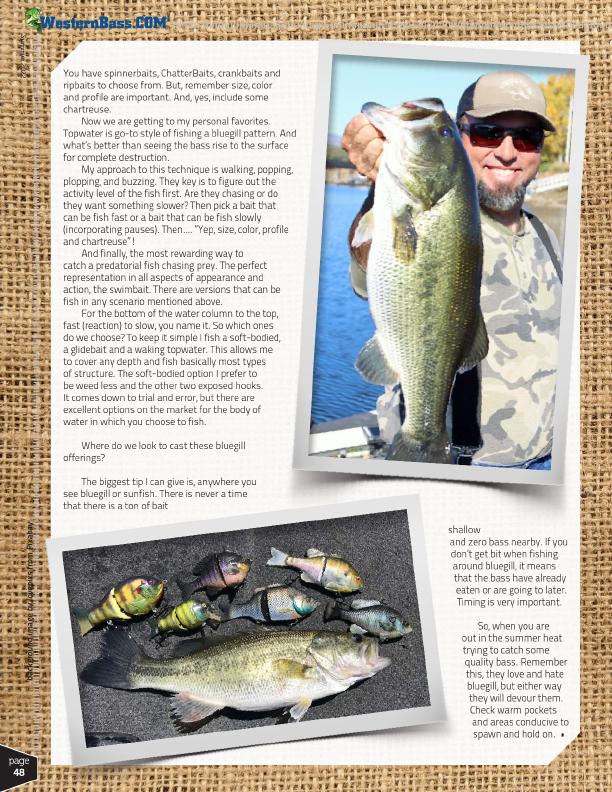
Summer 2022
®
You have spinnerbaits, ChatterBaits, crankbaits and ripbaits to choose from. But, remember size, color and profile are important. And, yes, include some chartreuse.
Now we are getting to my personal favorites. Topwater is go-to style of fishing a bluegill pattern. And what’s better than seeing the bass rise to the surface for complete destruction.
My approach to this technique is walking, popping, plopping, and buzzing. They key is to figure out the activity level of the fish first. Are they chasing or do they want something slower? Then pick a bait that can be fish fast or a bait that can be fish slowly (incorporating pauses). Then…. “Yep, size, color, profile and chartreuse”!
And finally, the most rewarding way to catch a predatorial fish chasing prey. The perfect representation in all aspects of appearance and action, the swimbait. There are versions that can be fish in any scenario mentioned above.
For the bottom of the water column to the top, fast (reaction) to slow, you name it. So which ones do we choose? To keep it simple I fish a soft-bodied, a glidebait and a waking topwater. This allows me to cover any depth and fish basically most types of structure. The soft-bodied option I prefer to be weed less and the other two exposed hooks. It comes down to trial and error, but there are excellent options on the market for the body of water in which you choose to fish.
Where do we look to cast these bluegill offerings?
The biggest tip I can give is, anywhere you see bluegill or sunfish. There is never a time that there is a ton of bait
background image by lovepixs from Pixabay
page 48
shallow and zero bass nearby. If you don’t get bit when fishing around bluegill, it means
that the bass have already
eaten or are going to later.
Timing is very important.
So, when you are out in the summer heat trying to catch some quality bass. Remember this, they love and hate bluegill, but either way
they will devour them.
Check warm pockets
and areas conducive to
spawn and hold on. •